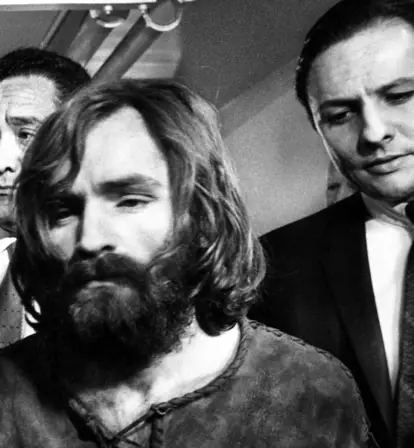Did Charles Manson kill anyone? No. Who said he ordered any killings? Only the killers themselves. So what did Charles Manson actually do?
Charles Milles Manson was not a good person. By most accounts, he was a racist, rapist, car thief, and attempted murderer, having nonfatally shot a man named Bernard “Lotsapoppa” Crowe in a drug deal gone wrong in Hollywood on July 1, 1969 — the month before the Tate-LaBianca killings that made him forever infamous.
But, despite being branded a murderer by the media and being remembered that way by the public over the half-century since, Charles Manson never actually killed anyone.
Locked up from the ages of 12 to 19, 21 to 24, and 25 to 32, Manson spent half his life prior to the 1969 murders in prison. And he likely belonged there — or at least in a mental institution — and surely would have ended up incarcerated again for something at some point.

Michael Ochs Archives/Getty ImagesCharles Manson sits at the defendant’s table at the Santa Monica Courthouse for a hearing regarding the murder of Gary Hinman. June 1970.
But was the successful murder case against him for the Tate-LaBianca killings — which he was said not to have committed but to have ordered and which kept him in prison until his death in 2017 — as airtight as we’ve been led to believe?
It’s long since been established that the answer to the question “who did Charles Manson kill?” is nobody. So the real question then becomes “what did Charles Manson do?” And the answer certainly isn’t as simple as “brainwash some innocent young hippies and force them to commit murder.” The real answer, in fact, is much more complicated — and disturbing — than you might think.
Did Charles Manson Kill Anyone: Getting To The Truth
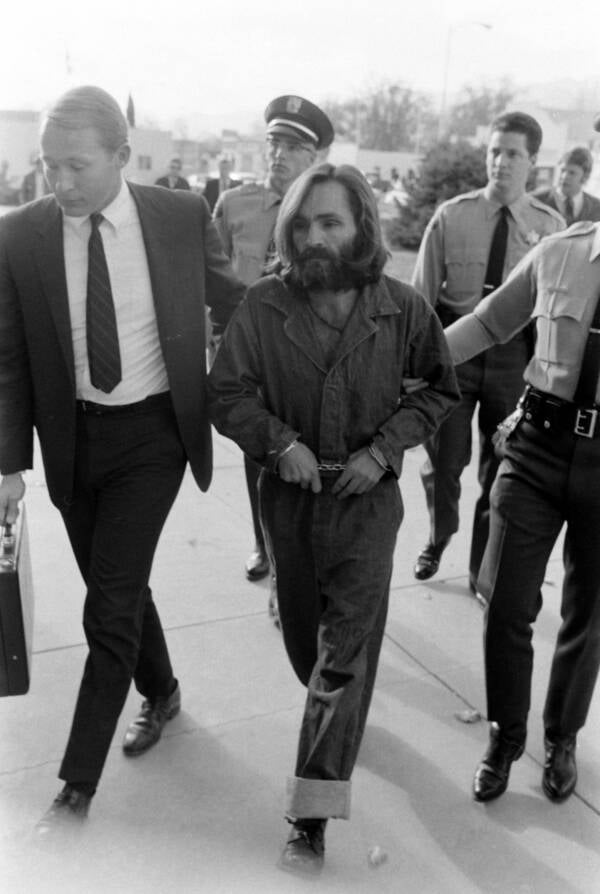
Vernon Merritt III/The LIFE Picture Collection/Getty ImagesCharles Manson heads to a preliminary hearing in his murder proceedings in Independence, California. December 1969.
For most people, Charles Manson was either a criminal mastermind with the near-mystical ability to bend others to his will or an acid casualty ex-con who turned a group of 20-somethings into his personal death squad either as an act of personal vengeance or to kick off a predicted apocalypse.
And there are good reasons why this is the most widely-believed story behind the Manson Murders. It was both the case put forward by state prosecutors led by Los Angeles County Deputy District Attorney Vincent Bugliosi during the 1970 trial, as well as the defense mounted by several people who were credibly tied to and ultimately convicted of the Tate-LaBianca and Gary Hinman murders.
However, there are also good reasons to question this version of events.

Bettmann/Contributor/Getty ImagesCharles Manson speaks with reporters as he is escorted by a deputy sheriff and his lawyer, Irving Kanarek, from a Santa Monica courthouse following a hearing in the Gary Hinman murder case. June 1970.
Part of the problem in unpacking the truth behind the Tate-LaBianca and Hinman killings is that many of the people involved offered conflicting accounts, many of which have themselves evolved in different directions depending on who is telling the story and when.
But the first account of the crimes — the one that originally set the case against Charles Manson in motion — came from one woman named Susan “Sadie” Atkins, a former stripper and Church of Satan member who met Charles Manson in 1967. Less than two years later, she set in motion the proceedings that would eventually bring him down.
Susan Atkins’ Complicated Confessions
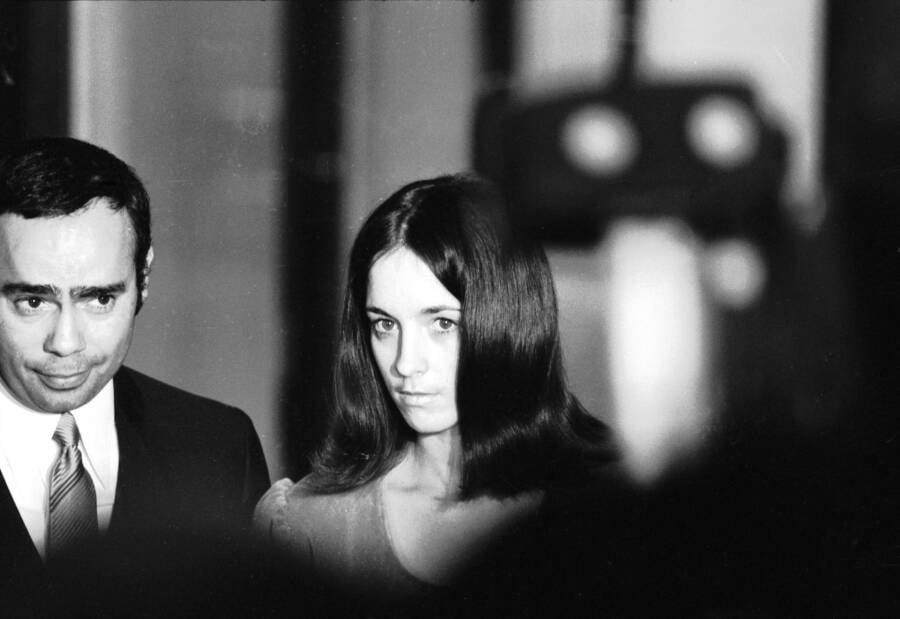
Ralph Crane/Time Inc./Getty ImagesSusan Atkins leaving the grand jury room after testifying against Charles Manson.
Picked up in an October 1969 police raid on the Manson Family’s home at Death Valley’s Barker Ranch, Susan Atkins was identified as a person of interest in the still-open murder of Gary Hinman, having been reportedly implicated by his killer, Bobby Beausoleil, as an accomplice in the botched drug deal that ended in homicide.
Then detained by authorities separately from other Manson Family members picked up during the raid, Atkins began to brag to her new cellmates about all of the murders she had been a part of in her attempts to “do a crime that would shock the world.”
In addition to confessing to her role in the murder of Hinman, she went on to describe the then-unsolved Tate-LaBianca murders, saying she herself had killed actress Sharon Tate in her home on August 9 and drunk blood from her stab wounds. Atkins’ cellmates quickly told the authorities everything.
Between Atkins’ arrest and Manson’s capture at the group’s makeshift home at Spahn Ranch soon after, Atkins confessed to police multiple times. According to the district attorney’s notes, that testimony did not implicate Manson in the murder of Hinman. However, in one retelling of the Tate-LaBianca murders, Atkins “guessed” that Manson had given them instructions to kill ahead of time.
And this would be the initial basis of Manson’s arrest and all the charges against him. However, it’s worth noting a couple of things that throw Atkins’ reports into question.

Michael Ochs Archives/Getty ImagesSusan Atkins at a 1970 court hearing for the murder of Gary Hinman.
For one, Manson is never mentioned in Atkins’ original testimony and she later claimed that the story she told her cellmates was an inaccurate exaggeration. Additionally, as investigators pressed Atkins for more information, they were illegally threatening her with the gas chamber, offering her full immunity, and had custody of her 10-month-old son — all of which may have put her undue pressure and thus swayed her account.
Lastly, when Atkins ultimately clarified her account, she said that she actually had no foreknowledge of what she and fellow “Manson Family” members Tex Watson and Patricia Krenwinkel were meant to do at the Cielo Drive house where Sharon Tate and her friends Jay Sebring, Abigail Folger, and Wojciech Frykowski were staying, but instead said that Manson had only told her to “do everything Tex said to.”
This brings us to the second person — whose account and credibility may not be airtight — that made Charles Manson a murderer in the minds of the state and the public.
Tex Watson: American Zombie?
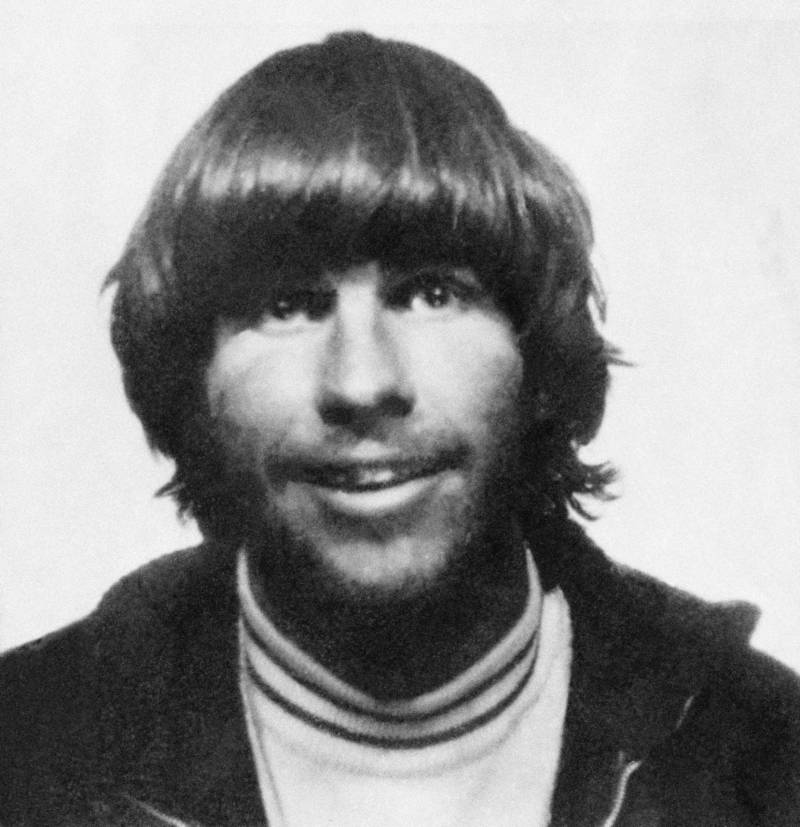
Bettmann/Getty ImagesCharles “Tex” Watson
Originally from Texas, Charles “Tex” Watson had met Charles Manson while living with Beach Boys drummer Dennis Wilson in 1968. One of the relatively few male Manson Family members, Watson is unique in several other ways. As he had left the Family by the time of the other arrests in late 1969, his trial was handled separately.
But Watson was the one who, by all accounts, had done most of the actual murdering, even proclaiming “I’m the devil, and I’m here to do the devil’s business” before shooting one of his victims. Watson was also pivotal in selling the prosecution’s theory that he and all the others had been brainwashed by the mentally ill drifter with whom they’d been associating.
Prior to Tex Watson’s trial in 1971, he was briefly declared mentally incompetent and was hospitalized after suffering a psychological breakdown in jail. Upon his return to court, the psychiatric consensus was that he had drug-induced brain damage and periods of delusion but was otherwise competent.
At the time of the murders, two years previously, Watson had been a daily LSD user and regularly ingested tea made from belladonna seeds, a scopolamine-producing nightshade he found growing in the desert. What’s more, he and Susan Atkins shared a secret methamphetamine stash that both of them used “continually” in the days before the murders.
Though drug use assuredly had a lot to do with Watson and Atkins’ actions, Watson’s defense maintained that he had committed the murders in a “robot-state” brought about by Manson perpetually drugging him and desensitizing him to violence. His victims had felt like “imaginary people,” he told a psychiatrist, forming the basis of his temporary insanity plea.
This argument — that Manson had brainwashed Watson (and the others) — was the crux of both Watson’s defense and Manson’s prosecution. But it virtually all rested on Watson’s word, which perhaps shouldn’t be taken at face value.
Even Deputy District Attorney Vincent Bugliosi, upon hearing Watson’s claims, asked the psychiatrist: “Can you tell me one thing Watson told you that you did not believe or did you buy everything he said lock, stock, and barrel?”
Following Bugliosi’s lead, here is a thought experiment: Which of these two scenarios sounds more likely?

Bettmann/Getty ImagesCharles “Tex” Watson arrives for his arraignment on charges of conspiracy and murder.
Was Charles Manson — diagnosed with schizophrenia in 1963, prone to speaking in nonsense, and incapable of staying on topic — successfully conducting extensive MKUltra-esque brainwashing experiments on as many as 40 people in the desert?
Or, could Tex Watson — who’d already threatened to kill one of the Manson girls and was using large amounts of dangerous drugs — have had preexisting proclivities toward violence?
When it comes to the guilt or technical, legal “innocence” of Charles Manson, this is the question everything comes down to. And the evidence that saw the state and the public decide that question not in Manson’s favor is much thinner than most people realize.
Who Did Charles Manson Kill And What Did Charles Manson Do?
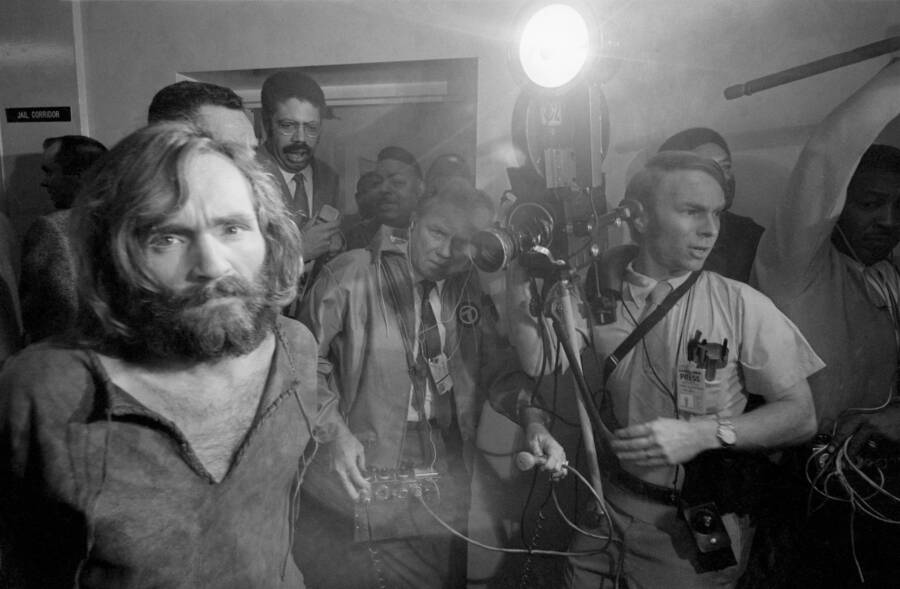
Bettmann/Contributor/Getty ImagesCameramen film the scene as Charles Manson is brought into the Los Angeles city jail under suspicion of having masterminded the Tate-LaBianca murders. December 1969.
Manson was ultimately convicted on seven counts of murder and one count of conspiracy to commit murder (Watson was likewise convicted, despite his attempt at an insanity plea). In every case, the murder charge was as an accomplice and prosecutors acknowledged Manson was neither present at the murders nor had he explicitly ordered them. According to the case put forward at trial, Manson did not need to explicitly command anything in order for the Family members to know what it was that he wanted them to do.
In one interview with a psychiatrist, Watson said that Manson was capable of “computing” him and influencing him at a distance:
“As we drove along I could hear Charlie’s voice inside my head, computing what he had said, every movement, ‘Go up to the house… kill them, cut them up, hang them on the mirrors.'”

Wikimedia CommonsTex Watson’s mugshot. 1971.
Now, admittedly, Manson himself might well have believed that he actually had such an ability. He claimed to have resurrected animals in the desert and that President Nixon’s resignation was the result of one of his hexes. During his initial arrest period, prior to trial, he apparently spent time trying to dissolve his jail cell’s bars with psychic energy.
These are clearly the acts of a mentally unstable man. But, if this is the sort of thing that prosecutors had in mind when they said that Manson was capable of “brainwashing” dozens of people and bending them to his will, that is a serious problem.
Sick, Yes, But What Kind?
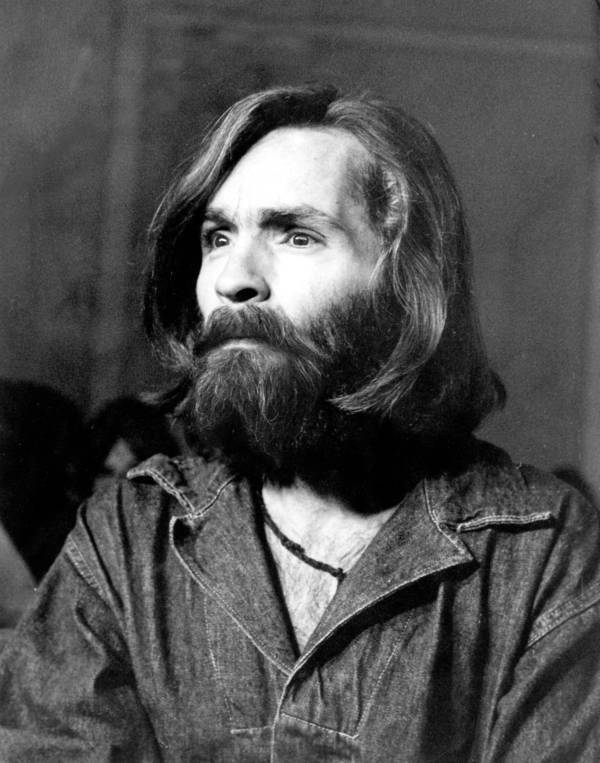
Michael Ochs Archives/Getty ImagesCharles Manson at trial. 1970.
In his 1971 summary of Tex Watson’s psychiatric reports, Dr. Keith Ditman made a crucial statement: “Although the drug ingestion started as a willful act on his part the psychosis… was not willful, this occurred as a happenstance of the confrontation of Manson’s dominant personality and psychotic philosophy with… [Watson’s] passive-dependent, inadequate personality, and non-directional life orientation.”
Although Ditman seems to mean that Watson did not willingly choose to believe in Manson as a god-like figure (and was instead “brainwashed”), the doctor’s same framing and phrasing could just as easily be taken to mean that Manson did not will for Watson to believe in him at all.
In order for the relationship between Manson and Watson to be criminal on the part of the former, Manson would have to have demonstrably and intentionally brainwashed Watson. And brainwashing is precisely what the prosecution said Manson did.
But that ignores Watson’s own comments about Manson seeming to “not know what he was doing.” Atkins meanwhile referred to Manson as “crazy” and at one point suggested that he was a canvas for Family members’ projections: “[W]hen Charlie talked.. we all heard different things. He spieled generalities and we supplied the details individually.”
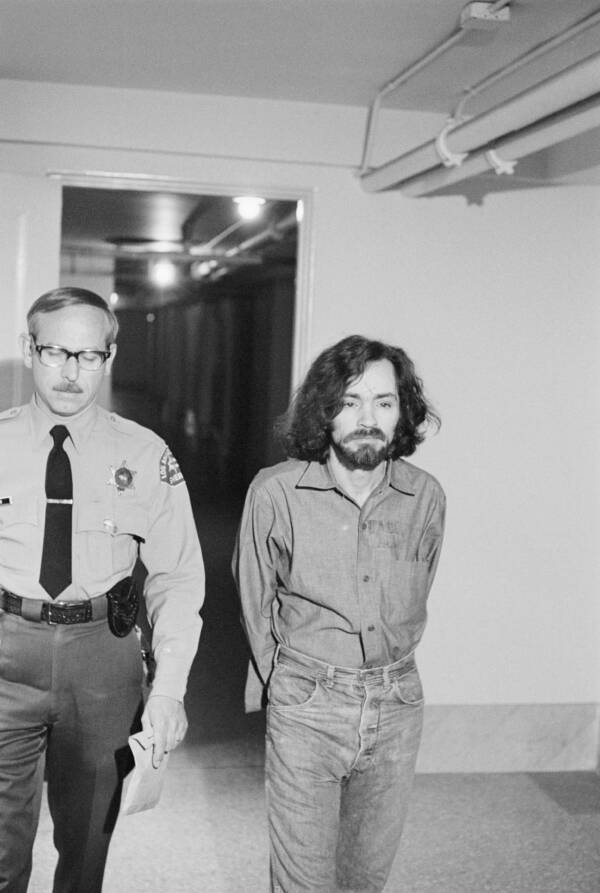
Bettmann/Contributor/Getty ImagesCharles Manson is escorted by a sheriff’s deputy to the courtroom as his trial continues for the Tate-LaBianca murders. August 1970.
There is indeed plenty of similar evidence to suggest that Charles Manson was not the mind-bending cult leader he’s come to be seen as. What’s more, there’s even evidence to suggest that some of Manson’s supposed “followers” were actually the leaders themselves.
Bobby Beausoleil was proven to have had his own followers, claimed to be the devil, and was shown to be the man behind the Hinman murder. Furthermore, the Family continued expanding even after Manson’s arrest and Manson was said by insiders to have “needed” follower Lynette “Squeaky” Fromme, the Family’s subsequent leader, more than she needed him.
The questions on everyone’s minds shouldn’t have been “who did Charles Manson kill?” or “did Charles Manson kill anyone?” but “was Charles Manson even responsible for inciting murder or leading a cult at all?”
Brainwashing: A Prosecutorial Paradox
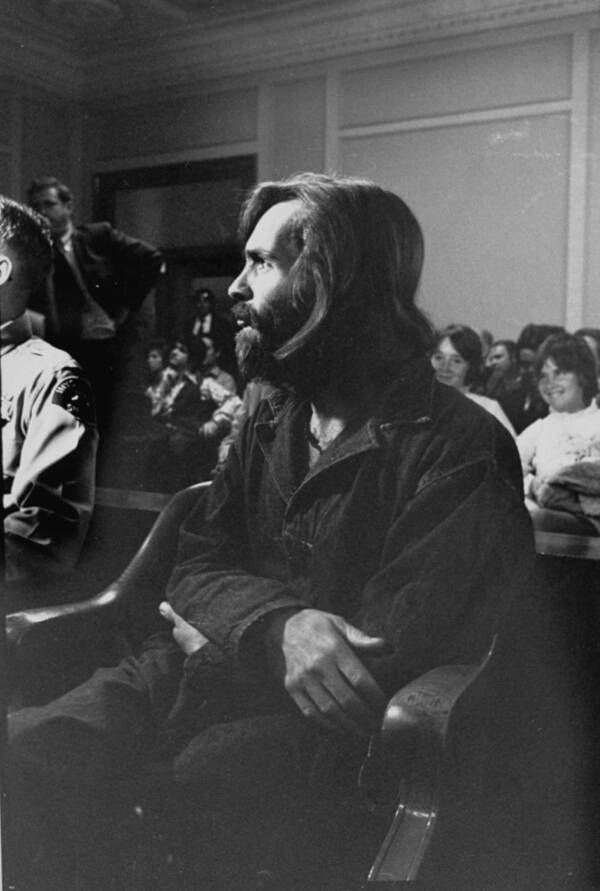
Vernon Merritt III/The LIFE Picture Collection via Getty Images
Even if we take Watson’s statements about brainwashing as fact, the very idea of brainwashing’s effectiveness is an open question. And even for those who actually do believe that it can be effective, it does not sound like what Tex Watson described to his therapist.
In reality, this sort of “programming” involves an incredibly regimented and time-consuming process, requiring near-medical grade control over a subject for an extended period.
An interesting parallel can be found in the case of Patty Hearst, the kidnapped heiress turned urban guerilla fighter. Three years after the Manson verdicts, Hearst was abducted by the radical group known as the Symbionese Liberation Army. But following the deaths of her main captors in an FBI shootout, Hearst continued carrying a rifle and participating in robberies.
After her arrest, Hearst’s defense described her torture and rape at the hands of her captors that resulted in her being “brainwashed.” However, just five years after the Manson trials, another California jury decided that Hearst’s defense wasn’t good enough and didn’t buy the brainwashing angle, causing her to be sentenced to 35 years in prison.
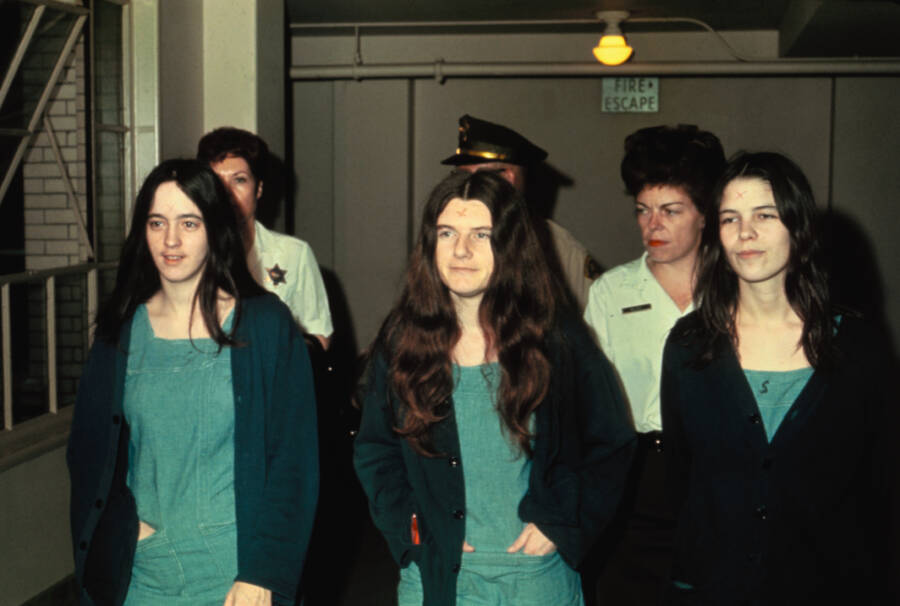
Getty ImagesManson Family members and murder suspects (from left) Susan Atkins, Patricia Krenwinkle, and Leslie Van Houten.
In the case of Watson and the rest of the Manson Family, however, this brainwashing angle is precisely the sort of the thing that the jury (and the public) believed to be accurate.
Done in by the brainwashing angle and already guilty in the court of public opinion, Manson was convicted in December 1971. President Nixon had already called him guilty on live television. It was “the crime of the century,” in no small part because it had happened in Hollywood and left a beautiful, young actress butchered in horrific fashion.
The prosecution, the public, and the country itself wanted, even needed, this case to be wrapped up quickly and tidily. And however guilty he actually was, Manson — visibly deranged, spouting nonsense in the courtroom, sporting an “X” and then a swastika carved into his head — certainly looked the part of the villain.
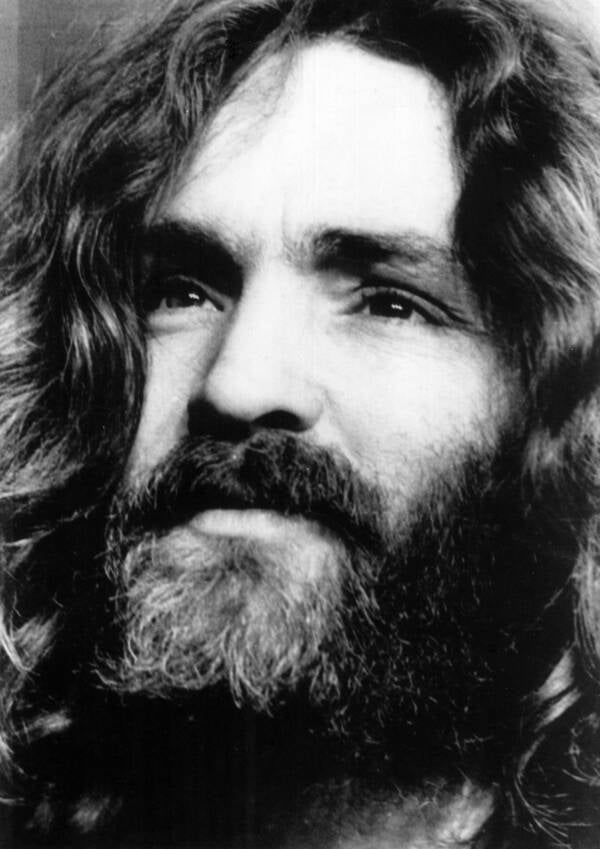
Mondadori Portfolio via Getty Images
But the only substantial evidence legally connecting Manson to the murders came entirely from the massaged and sculpted testimonies of Watson and Atkins, both confessed murderers whose reports could easily have been tainted by the likes of drugs and undue police pressure. Based on the available evidence, the only way to secure Charles Manson’s conviction was to portray him as a homicidal hypnotist — effectively a supervillain — motivated by an insane ideology.
Ironically, to this end, no one was more effective in selling the state’s case than Charles Manson himself.
Another View On The Manson Murders
Referring to himself as “Manson, Charles M., aka Jesus Christ, God,” he was denied permission to act as his own attorney and so he began to work the case in other ways.
He successfully pressured Atkins to recant her testimony, leading her to be replaced as the key witness by Linda Kasabian. In addition to instigating other coordinated theatrics, Manson influenced the three other Family members on trial to fire their attorneys in favor of ones he preferred. Then, during the penalty phase, he influenced Atkins and the other Manson girls to blame Linda Kasabian and absolve him entirely.
Whether this was the master plan of the mythical Manson, the ramblings of an unmedicated schizophrenic, or just an experienced ex-con doing everything in his power to escape prison, it doesn’t really matter.
Faced with such an obvious display of his “powers,” the jury convicted Manson on all charges and sentenced him to death (later changed to life in prison). And in the end, that was the most important thing, everyone thought: Charles Manson needed to be taken care of. He was mentally ill. He was guilty of something. Anyone could see how dangerous he was just by looking at him, right?
After all, if a schizophrenic drifter who can barely read turned young people into killers with speeches like, “Yeah… get educated… study the mystery of history, and the ramis-jamis… and in the meantime, we’ll call it the in-between time… Now, take the toad’s toenail… pretty, ain’t it – bleep bleep – ride in a jeep,” clearly the children needed to be protected from this menace.
https://www.youtube.com/watch?v=qZyt6UBA3Jc
And lock up this menace the prosecution did, even if it meant effectively arguing that he was a telepathic wizard who “computed” people through rambling speeches and folk music. Given the actual available evidence, the wizard angle was the easiest way to convict Manson, and the part of the wizard was one he was born to play.
Building the myth was easier than understanding the crime. It was certainly easier than answering how the hippie generation’s hopes for a brighter tomorrow and the white American middle-class’ best intentions for their children had spawned such a terrifying turn of events.
After this look at the often-asked questions “who did Charles Manson kill?” and “did Charles Manson kill anyone?,” experience some of the most astounding Charles Manson quotes. Then learn more about the answer to the question of what did Charles Manson do with this chilling collection of Manson facts.
